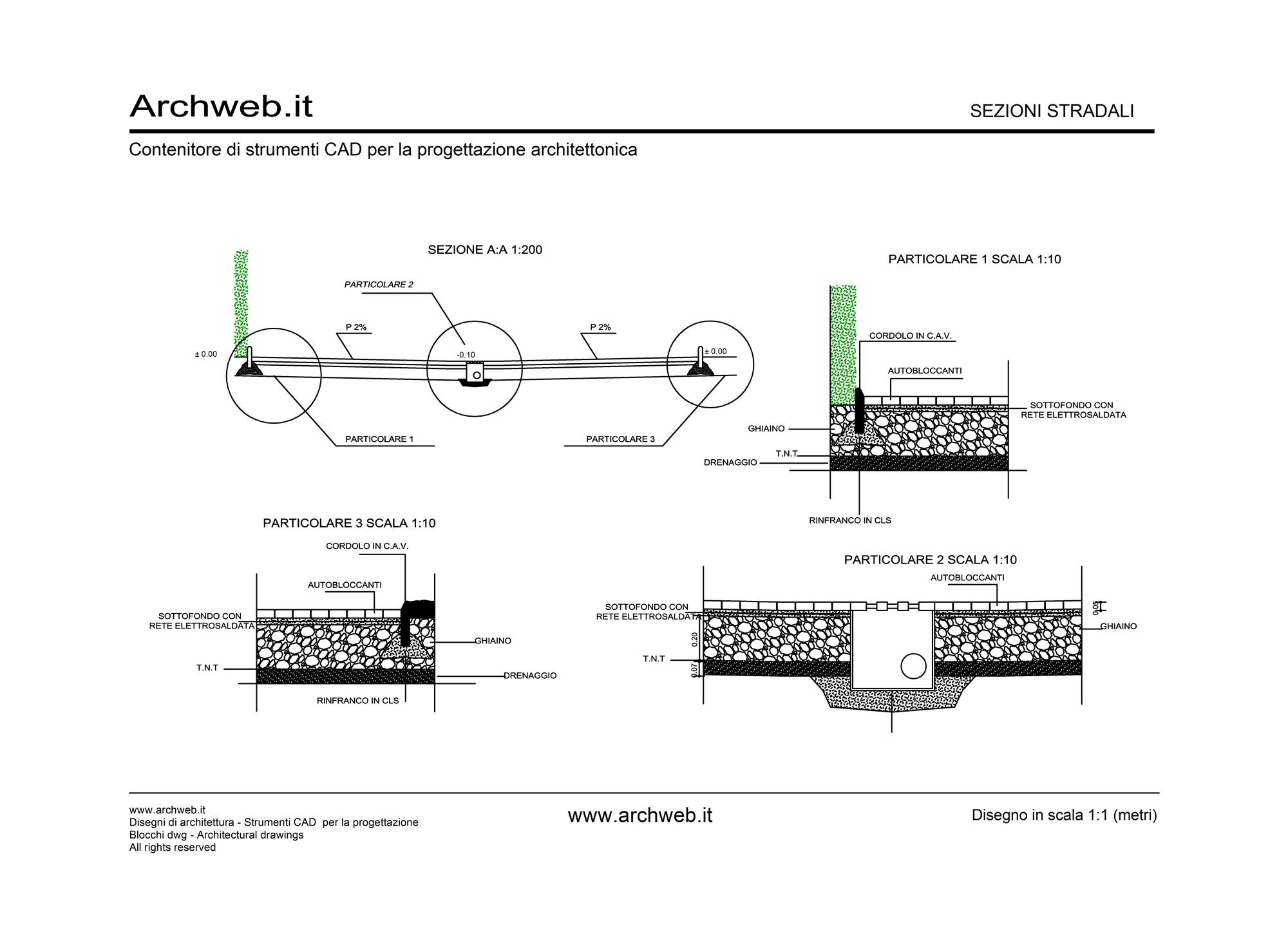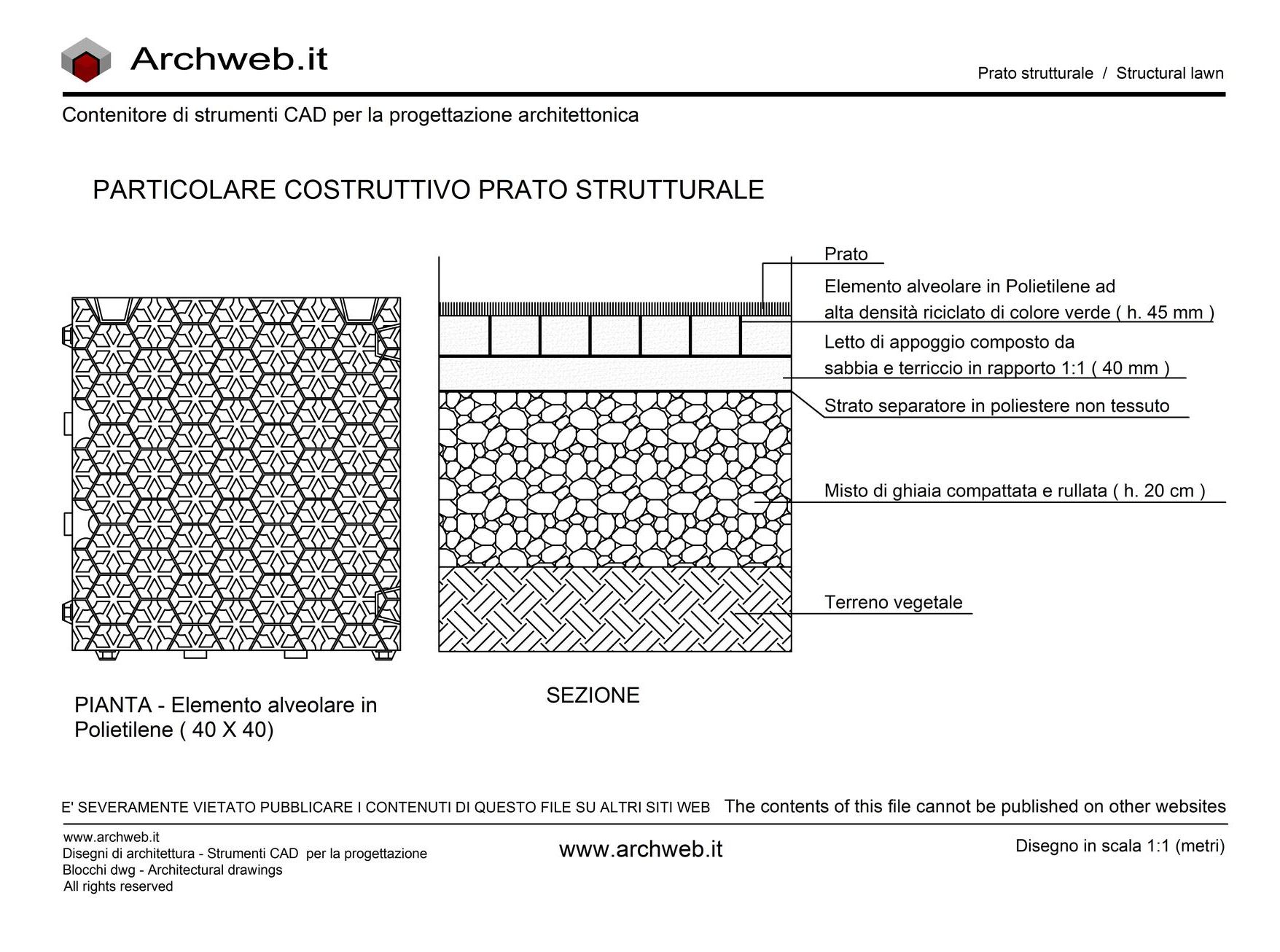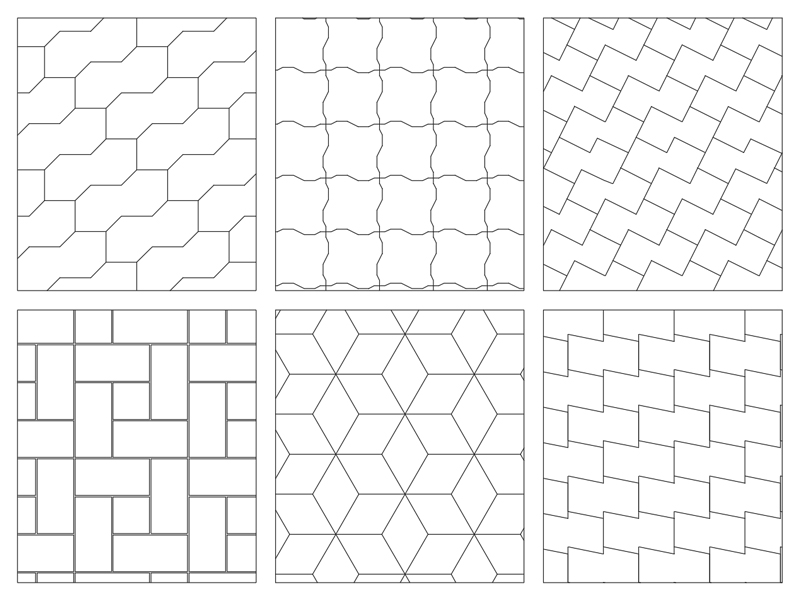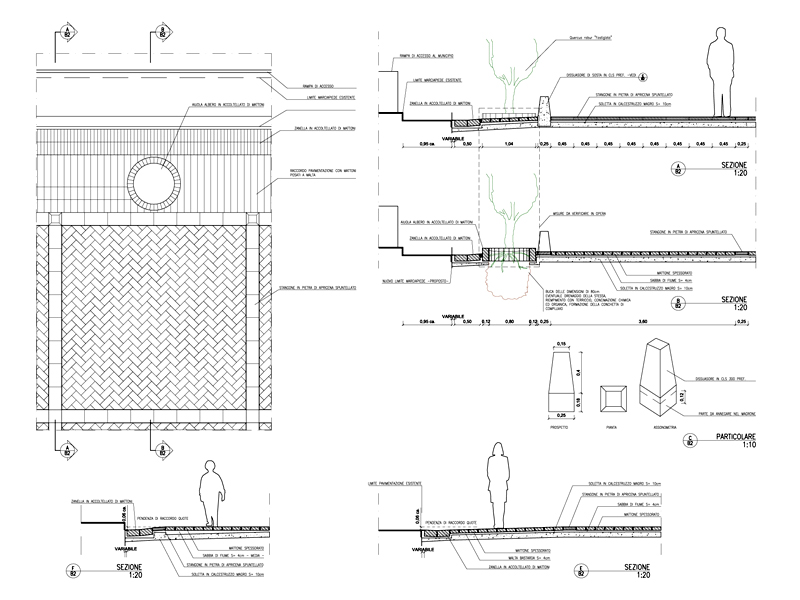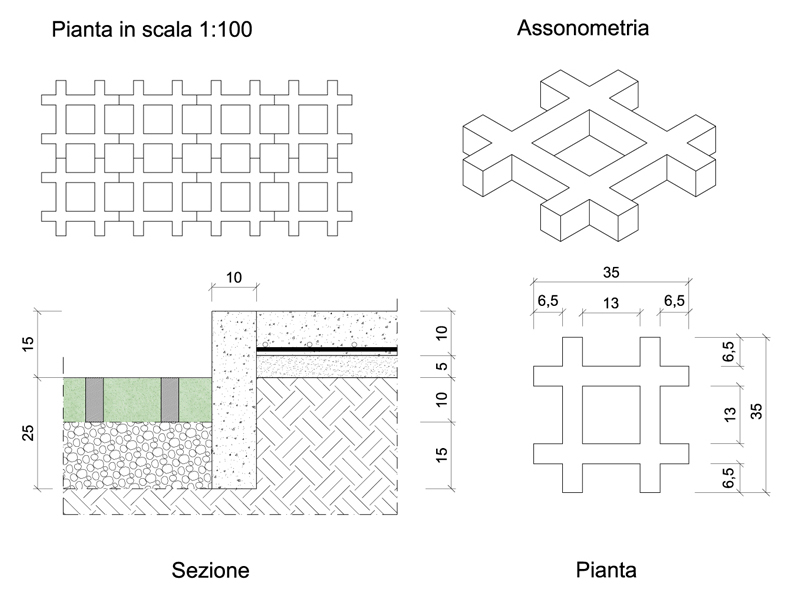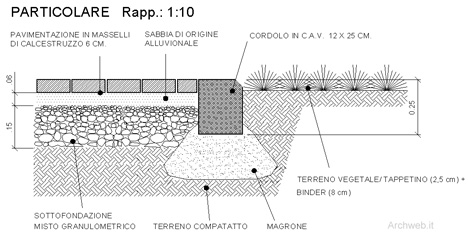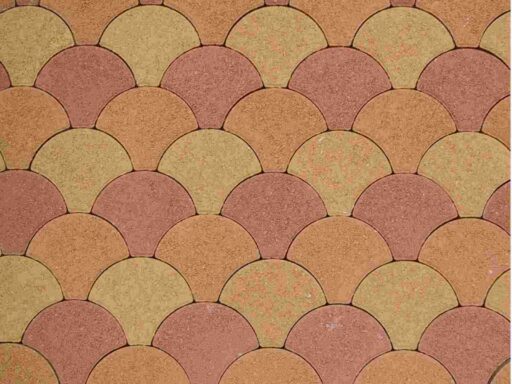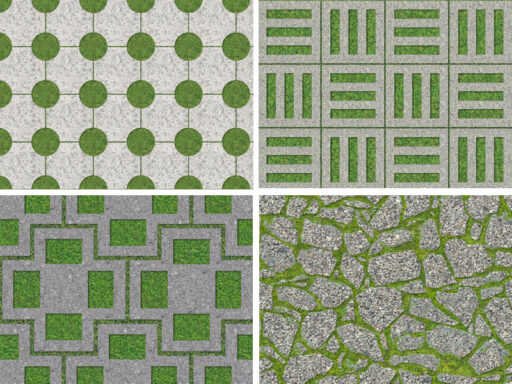Self-locking paving
Design, durability, economy and eco-friendliness

The ideal solution for outdoor environments.
What is self-locking paving
Self-locking paving is a type of paving generally used for pedestrian areas, urban pavements, condominium forecourts, and squares. Due to its versatility and advantages, it is also used in residential construction.
Advantages of self-locking paving
The intrinsic characteristics of the elements that make up self-locking paving mean that it can be applied in often different contexts, easily adapting to various requirements.
Simplicity of laying
Self-locking paving is made of concrete blocks laid dry on the surface to be covered. The paving blocks have grooves to create a solid and compact surface.
Laying phases
Before laying a self-locking paving surface, the subgrade must be created.
The ground must clearly be levelled and compacted with suitable operating machines in order to be able to support the expected loads.
The subgrade ballast must have a minimum slope of 1.5 % to ensure proper water drainage.
Building the subgrade correctly will increase the service life of the self-locking paving.
Before proceeding with the next layers, the kerbs are made. The kerbs perform the very important function of lateral containment. In fact, they prevent the paving slabs from unbinding themselves and moving. The kerbs are made of concrete and fixed to the ground using cement mortar.
On the subgrade ballast, it is a good idea to lay a non-woven fabric over it. This layer will physically separate the ballast from the bedding layer and, in the event of rain, the geo-fabric will prevent rainwater from reaching the subgrade, damaging it over time.
Next comes the bedding layer. This layer is composed of moist, non-wet sand, must have a constant thickness and above all must adapt to the slopes imposed in the subgrade ballast.
Self-locking bricks are laid on top of the bedding layer. The laying geometry will vary depending on the ballast chosen. Dry laying allows for the proper drainage of rainwater, and if the sub-base has been laid with the right slope, water stagnation will not occur. Furthermore, thanks to the porosity of the brick, and thanks to the right slope of the ballast, the pavement will not be affected by the negative effects of winter freeze-thaw cycles. The porosity of the brick will also prevent pedestrians from passing safely even if the surface is wet.
Next, the joints will be clogged. Specifically, dry sand will be spread directly on the bricks, which will then be evenly distributed using a vibro-compactor.
After an initial compaction, and thus a reduction of the voids, a further layer of sand will be applied to complete the clogging of the joints.
From this last step, the success of the paving is determined. Inaccurate joint plugging will compromise the stability of the work.

Fast execution and drying times
As already mentioned, the simplicity of laying self-locking paving certainly makes it the most commonly used solution in outdoor areas. The simplicity of laying is clearly matched by the speed of execution. Not only that, once the self-locking paving is in place, it can be walked on without having to wait for long drying or curing times.
Strength and durability
The elements that make up self-locking paving are elements with high compressive strength and weather resistance. A single element, however, cannot guarantee durability. Self-locking paving has a long life if each layer that makes it up is executed very carefully.
Ease of removal
If it is true that self-locking paving is easy to make, it is also true that removing it is just as easy. This feature is not to be underestimated, because if, for example, maintenance has to be carried out on the pipes underneath, or work has to be done underground, only the necessary elements can be removed and replaced once the maintenance is complete.
Permeability
Depending on the model and the type of laying, the self-locking paving can reach a permeability index of up to 100 per cent.
Affordability
The simplicity of laying self-locking paving clearly reduces labour costs.
Aesthetic appearance
Another not inconsiderable advantage is the aesthetic appearance that can be achieved by paving self-locking paving. There are many products on the market that differ in terms of material (clay, terracotta, natural stone, concrete), shape, finish and colour. Each project can therefore be easily customised.

Photo: photographee.eu on Depositphotos.com

Photo: photographee.eu on Depositphotos.com
Disadvantages of self-locking paving
Although numerically the disadvantages certainly outweigh the advantages, when considering self-locking paving, it is good to keep these fundamental aspects in mind.
Formation of vegetation and mosses
In the parts less exposed to the sun, between the joints, you can find the formation of spontaneous vegetation or mosses.
Surface depressions
It may happen that, as a result of ballast settling, surface depressions are created in the pavement.
Breakdowns
If the subfloor has not been properly executed, disruptions may occur between the individual elements as a result of the loads to which the pavement is subjected.
Self-locking screeds
Self-locking paving slabs must have high load and weather resistance without neglecting aesthetics.
Slide with various paving geometries with self-locking blocks
What are self-locking blocks
Self-locking paving blocks used for outdoor paving are elements made of stone, terracotta or concrete. They have grooves that allow them to fit together without the need for cement mortars or adhesives.
Types of self-locking blocks
The market today offers a wide range of products for self-locking paving. However, the choice of self-locking paving blocks must take certain criteria into account:
- intended use: square, car park, residential courtyard, etc.
- aesthetic appearance
- loads to be supported
Depending on your requirements, you can choose between:
- Antiqued self-locking paving blocks: reminiscent of historical paving. Therefore used for rustic farmhouses, villas, palaces and historical centres;
- draining self-locking paving blocks: which, thanks to their conformity, allow rainwater to drain into the self-locking paving;
- filtering self-locking paving blocks: made with special mixes allowing rainwater to filter through the block;
- luminous self-locking paving slabs: composed not only of the paving block but also of a LED lighting system;
- design self-locking screeds;
- self-locking blocks for high loads.
Conclusions
Self-locking pavings have been decorating our cities for many centuries. Today they are certainly the most suitable solution for paving outdoor areas while guaranteeing water permeability. In residential construction they are used as driveway paving for vehicle access, for paving driveways, but thanks to their versatility they are also used in shopping centre car parks and industrial hall forecourts.
Author cover photo: Taras1540 su Depositphotos.com
recommended dwg drawings
DWG
DWG






































































